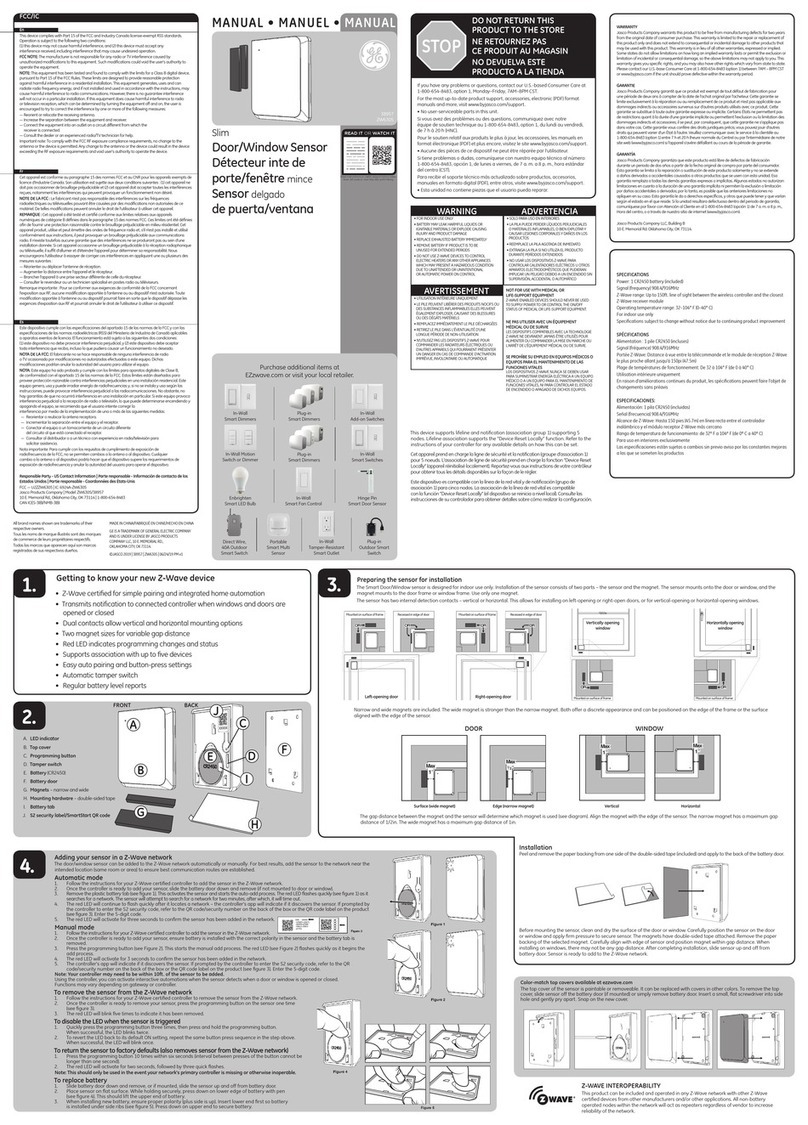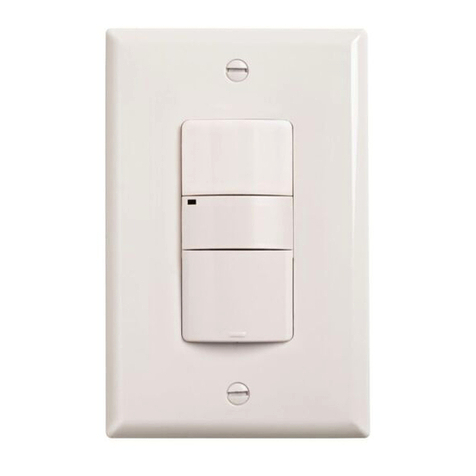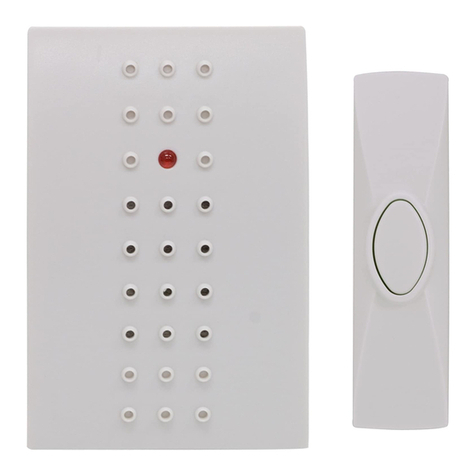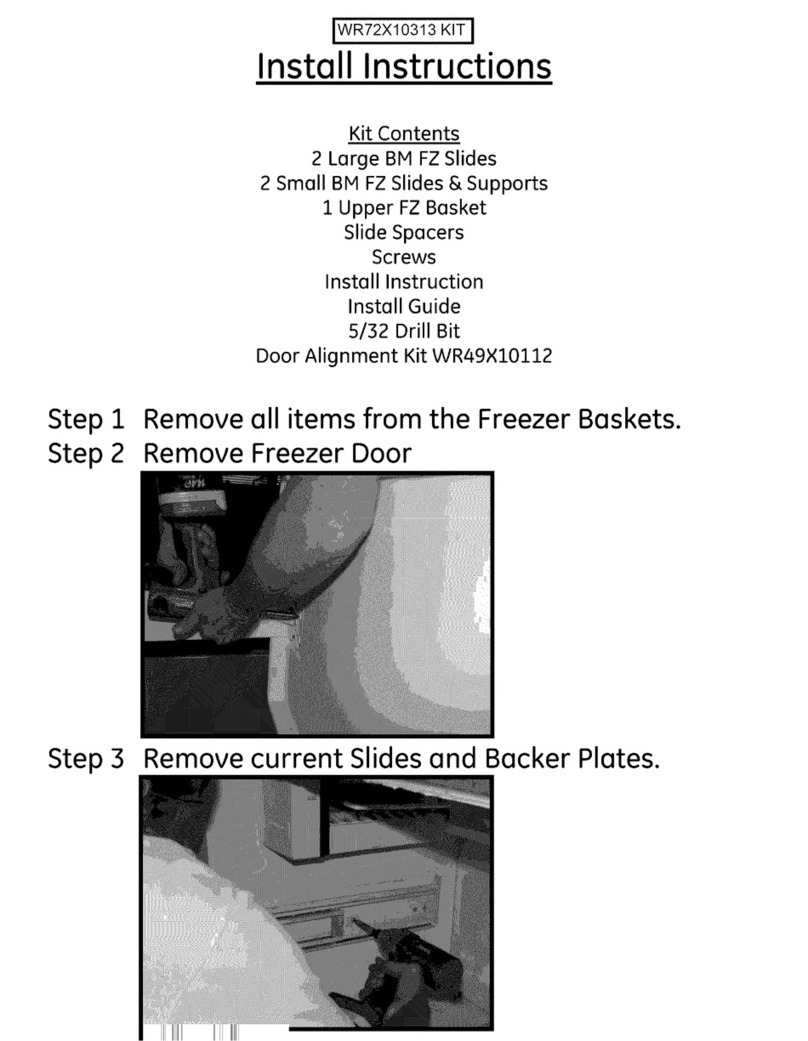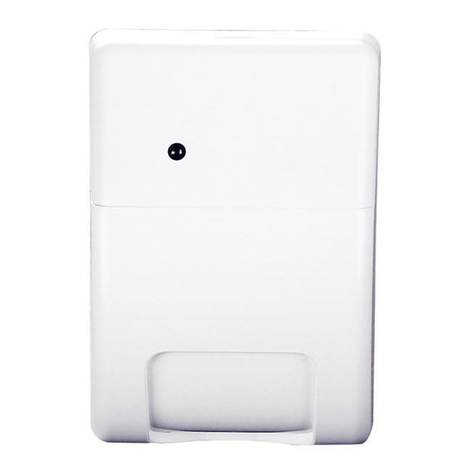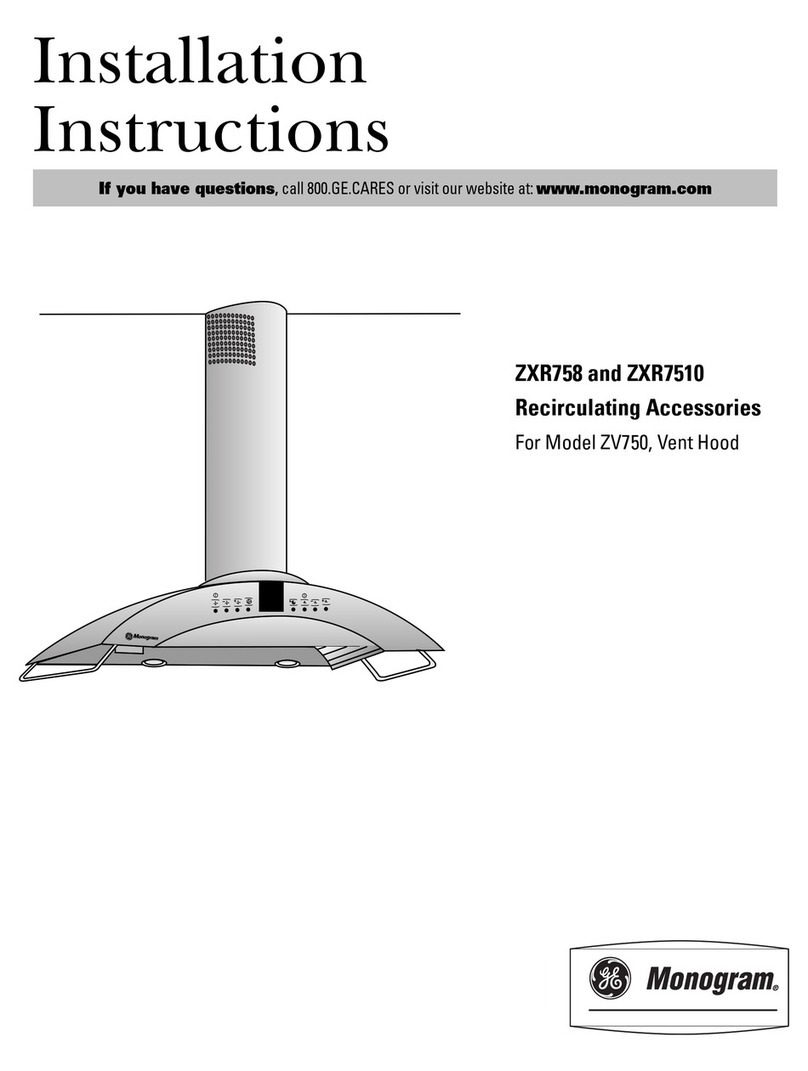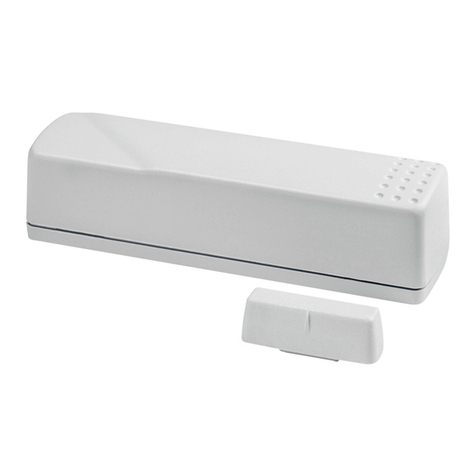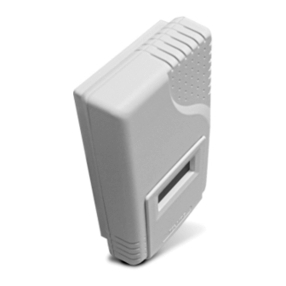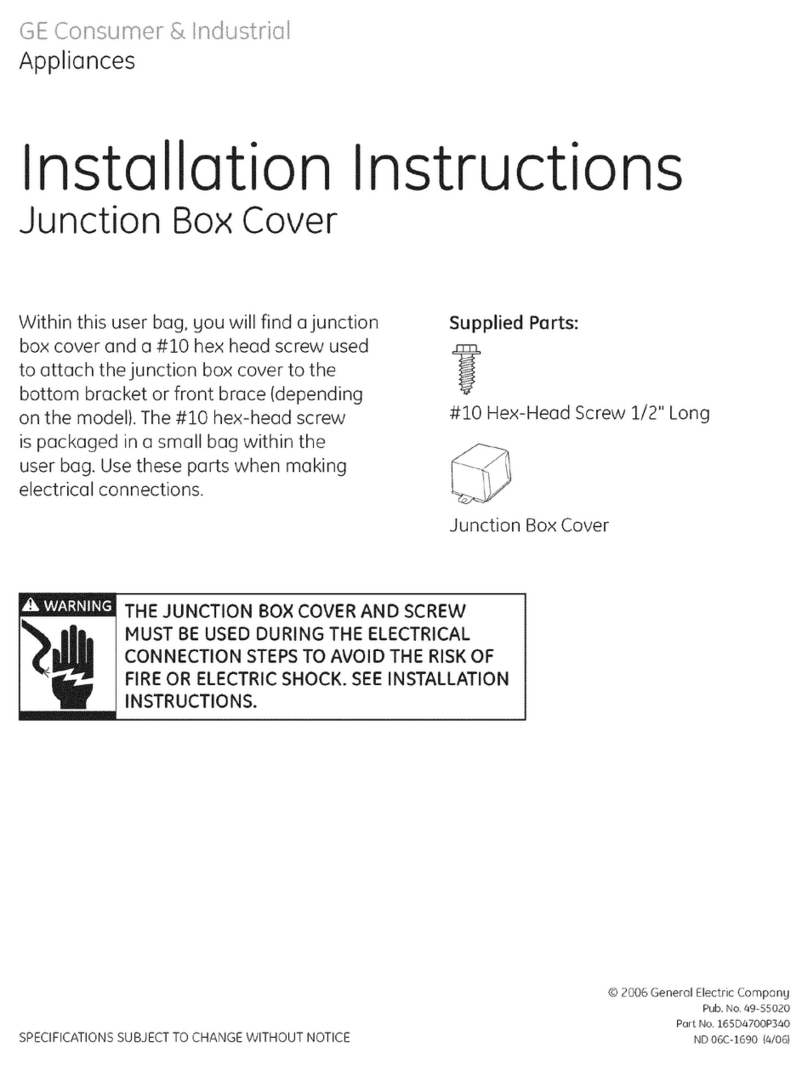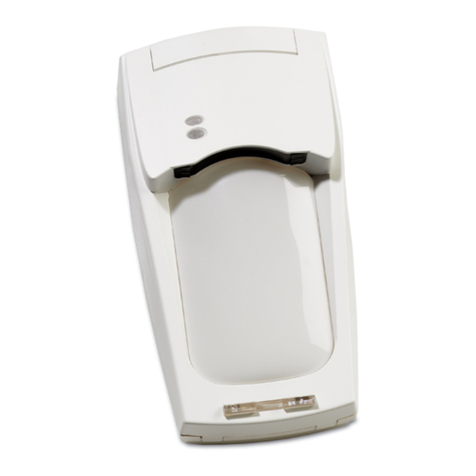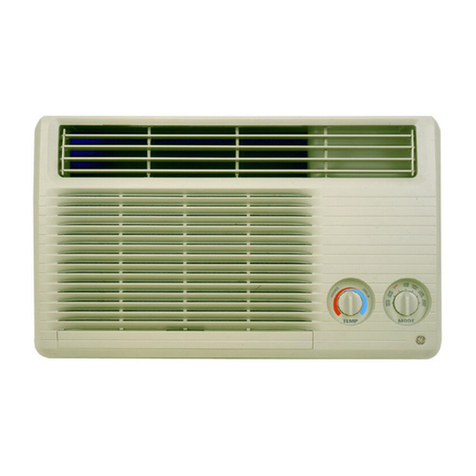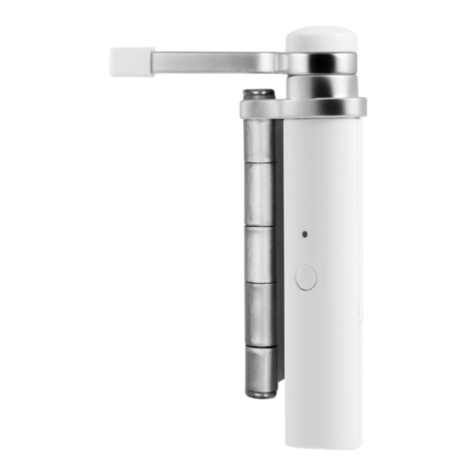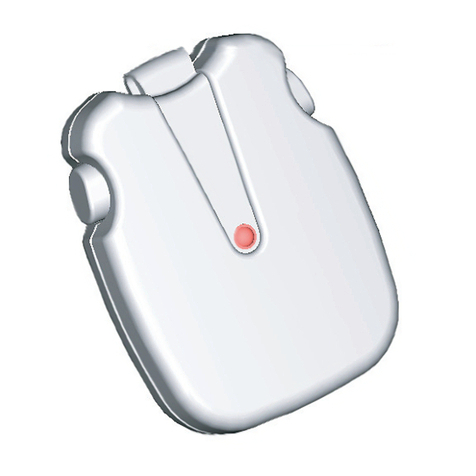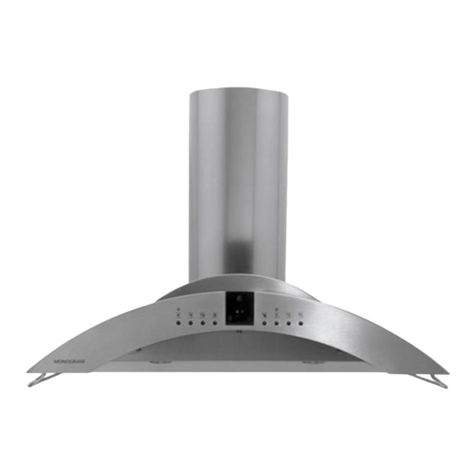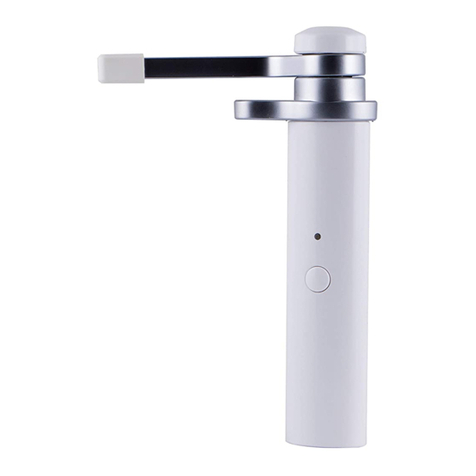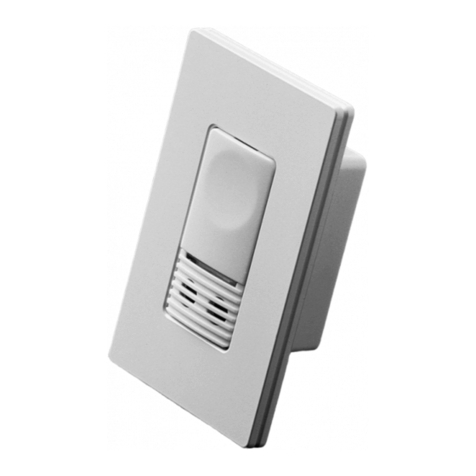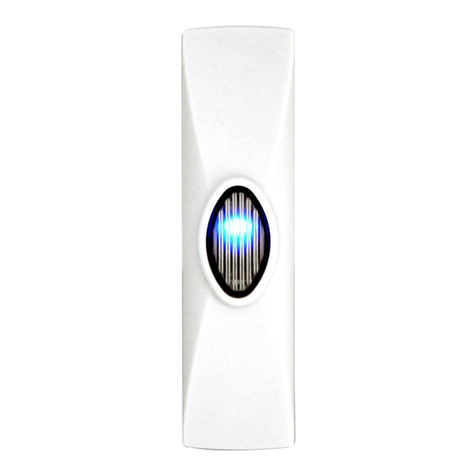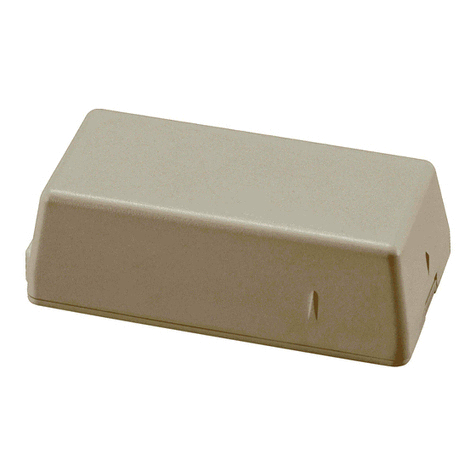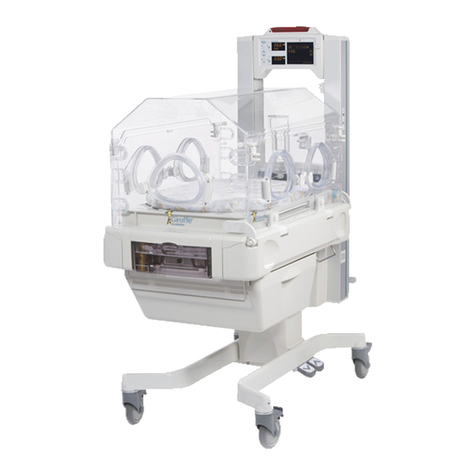
1043368C • June 2008
Copyright © 2008 GE Security
gSmoke Sensor 868 GEN2
Installation Instructions
Introduction
This is the GE Smoke Sensor 868 GEN2 Installation Instructions
for models TX-6211-03-1 and RF6211-03-1. The unit combines
a smoke sensor with an integrated fixed 135°F (57°C) tempera-
ture/rate-of-rise heat detector, and an 868 GEN2 transmitter for
use with compatible wireless control panels.
Under normal nonalarm conditions, the smoke sensor’s LED
flashes once every nine seconds while monitoring the
surrounding conditions. The smoke sensor transmits a supervi-
sory signal every 64 minutes to the panel indicating its status.
In an alarm condition due to smoke or heat, the LED changes
from flashing to on and the built-in sounder emits a temporal 3
pattern (a repeated series of three beeps followed by a short
pause). The smoke sensor also transmits an alarm signal to the
panel.
A built-in tamper switch activates whenever the smoke sensor is
removed from its mounting base, causing the smoke sensor to
transmit a tamper signal to the panel.
The smoke sensor is powered by two 3-volt lithium batteries
(included). When battery voltage gets low, the smoke sensor
transmits a low battery signal to the panel. If the batteries are not
replaced within seven days, the smoke sensor’s built-in sounder
emits a short beep or chirp every 45 seconds.
The smoke sensor also includes self-diagnostics, automatically
adjusting its sensitivity to reduce the number of required clean-
ings. When cleaning becomes necessary, the smoke sensor has a
field-replaceable optical chamber.
General guidelines
Use the following guidelines when installing the smoke sensor.
• Before mounting the smoke sensor, program (learn) the
smoke sensor into panel memory and do a sensor test from
the smoke sensor’s intended location to ensure good RF
communication to the panel.
• Locate the smoke sensor in an environmentally controlled
area where the temperature range is between 40 and 100°F
(4.4 and 37.8°C) and the humidity is between 0 and 90%
noncondensing.
• Locate the smoke sensor away from ventilation sources that
can prevent smoke from reaching the smoke sensor.
• Locate ceiling-mounted smoke sensors in the center of the
room or hallway, at least 4 in. (10 cm) away from any walls
or partitions.
• When mounting to suspended ceiling tile, the tile must be
secured with the appropriate fastener to prevent removal.
• Do not mount the smoke sensor to the metal runners of
suspended ceiling grids. The metal runners can draw the
magnet’s field away from the smoke sensor’s reed switch
causing a false tamper alarm.
• Locate wall-mounted smoke sensors so the top of the smoke
sensor is at least 4 in. (10 cm) below the ceiling, but not
more than 12 in. (31 cm).
• In rooms with sloped, peaked, or gabled ceilings, locate the
smoke sensor 3 ft. (0.9 m) down or away from the highest
point of the ceiling.
• Batteries must be installed in order to attach the smoke
sensor to the mounting base.
Locations to avoid
Do not install smoke sensors in the following locations:
• In or near areas where combustion particles are normally
present, such as kitchens, garages, near furnaces, hot water
heaters, or gas space heaters.
• On the ceiling in rooms next to kitchen where there is no
transcom between the kitchen and such rooms.
• In damp or very humid areas or next to bathrooms with
showers. Locate smoke sensors at least 5 ft. (1.5 m) away
from bathrooms.
• In very cold or very hot areas.
• In dusty, dirty, or insect infested areas.
• Near fresh air inlets or returns or excessively drafty areas.
Heating/air conditioning vents, fans, and fresh air intakes
can drive smoke away from smoke sensors.
• In dead air spaces at the top of peaked ceiling or in corners
where walls and ceiling meet. Dead air may prevent smoke
from reaching smoke sensors.
• Near florescent light fixtures. Locate smoke sensors at least
10 ft. (3 m) away from these fixtures.
Installation
To install the smoke sensor, you will need to:
• Install batteries and program the smoke sensor in the panel.
• Verify panel communication.
• Mount the smoke sensor.
Programming
To program the smoke sensor, do the following:
1. Separate the smoke sensor from the mounting base by
turning the smoke sensor counterclockwise about 15
degrees. The smoke sensor should snap off of the mounting
base.
2. Slide the battery cover away from the smoke sensor to
unsnap it and lift it off (Figure 1).
Figure 1. Battery cover
3. Observing polarity, insert the two lithium batteries
(included) into the battery compartment and replace the
battery cover.
Battery cover

